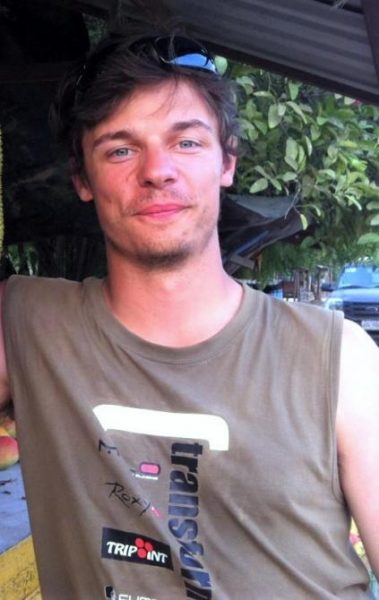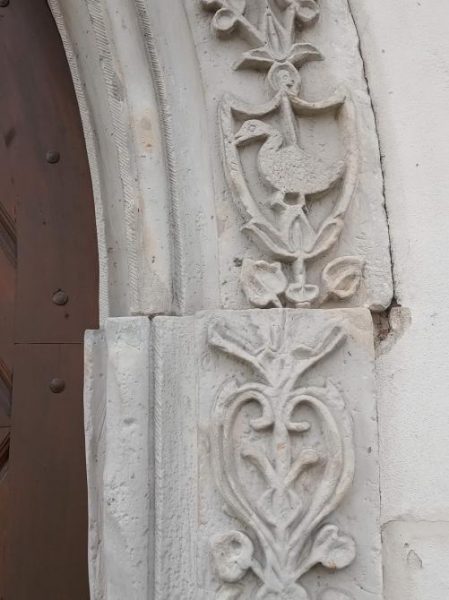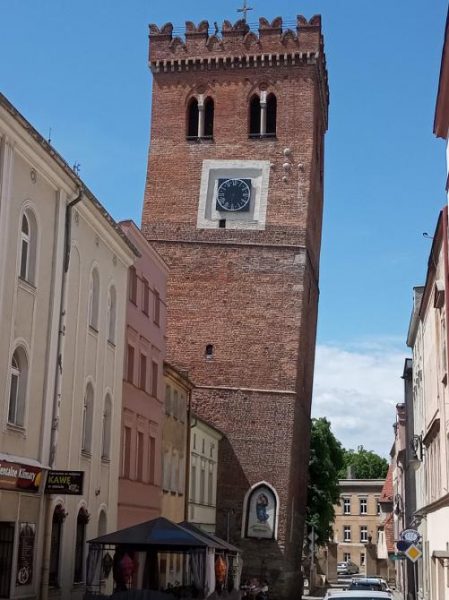RESEARCH EXCELLENCE INITIATIVE
FREEDOM OF RESEARCH – SCIENCE FOR THE FUTURE
“Freedom of research – science for the future” series consists of articles, interviews and short videos presenting research conducted by the winners of „Freedom of research”
Krzysztof Gaidzik, PhD
Geologists revise Długosz
| Maria Sztuka |
Were it not for the COVID-19 pandemic, Krzysztof Gaidzik, PhD, assistant professor at the Institute of Earth Sciences of the Faculty of Natural Sciences at the University of Silesia, would have continued many years of research in Latin America (started in 2008 and resumed during his postdoctoral fellowship), the most important goal of which is to identify the relationship between strong earthquakes in the Mexican and Peruvian subduction zones, shallow earthquakes related to crustal faults and the land relief. The trips were thwarted by the coronavirus, and because science cannot stand stagnation, in 2020 the geologist began the first archaeoseismological research in Poland in castles and churches of Lower Silesia, Beskidy and Świętokrzyskie Mountains (project financed by the “Freedom of research” program).
The long road from structural geology to active tectonics, i.e. from what happened millions of years ago, to the present day, has resulted in an added value; it has become the social aspect. Whether in the distant Andes, Mexico or Poland, the most important result of the research work, according to Krzysztof Gaidzik, PhD, is to equip local communities with knowledge about threats, determining the approximate time of their reappearance, as well as the possible degree of their intensity.

– The idea of archeoseismological research in southern Poland appeared as early as 2018 – recalls the assistant professor. – During the scientific congress in Belgium devoted to active tectonics, I met prof. Miklós Kázmér from the Budapest Loránd Eötvös University, a year later I accepted his invitation to go to Jordan, where we could participate in the archaeoseismological research conducted there. Their goal was to search for traces of historical earthquakes. We found then that the methodology applied there in facilities over a thousand years old would be worth applying in Central Europe, which is usually treated as an non-seismic areas. Catalogues of historical earthquakes in Europe are relatively scarce. Meanwhile, the statistical calculations of prof. M. Kázméra concerning Central Europe shows that we probably do not know about 90 present of historical earthquakes in these areas.
The main idea of the project was to supplement the catalogue of historical earthquakes in Poland, which starts with the date 1496. We know nothing for certain about earlier events. The scientist looks for traces of previous seismic movements. In the first catalogue (1902), the Czech geodesist Wacław Laska recorded 14 earthquakes in the Middle Ages on the territory of Poland, 70 years later Janusz Pagaczewski mentions 26 of them. At the beginning of the 21st century, Prof. Barbara Guterch from the Institute of Geophysics of the Polish Academy of Sciences already lists 69 major earthquakes and, according to the researcher, the list is still open..
– It is not only the constant improvement of research methods that decides about it, the greatest impact on the content of the catalogue is the verification and exchange of scientific ideas between scientists from various centres. Historical seismology is based mainly on preserved traces and historical records. The confrontation of Czech, Slovak, German and Austrian sources is invaluable, admits K. Gaidzik.
The implementation of the project was preceded by very careful preparations. The first stage was research carried out together with prof. M. Kázmérem in Italy, Austria and Romania, that is, in places where earthquakes are much better documented. – Observation of well-preserved traces of seismic movements was necessary to learn to recognize evident traces of earthquakes, to see similar structures in Poland, to be sure that they are undoubtedly the result of earthquakes – emphasizes the geologist. The project also required the acquisition of architectural knowledge, the ability to distinguish between styles and knowledge of historical literature, then it was the turn to search the city, church and museum archives and view hundreds of photographs. Unfortunately, the information contained in chronicles or annals is not a perfect source, records made mainly by clergy often turn out to be unreliable and strongly exaggerated, as proved by prof. B. Guterch on the example of a description of a strong earthquake in 1443 in Krakow, about which Jan Długosz writes in Annals. It sometimes happens that earthquakes were not disclosed because they were considered God’s wrath, so the clergy did not want to admit that people in their diocese had sinned so badly that they deserved God’s punishment. Many documents have been destroyed as a result of the wars waged in Europe. After the initial selection, scientists distinguished about a hundred objects, most of them are Romanesque and Gothic churches.

Researchers are interested in all deformations as well as unusual renovations. The supports, which are built in several different architectural styles, or the walls inclined from the vertical, are a signal that calls for a search in the preserved documents and for establishing the reasons for their creation. The source is also the available notes of renovation teams, which, among many technical data, sometimes reveal valuable information on the condition of walls, repaired defects, bricked up windows, portals, etc.
– The shift in the same direction in the horizontal plane of the columns supporting the tower in the collegiate church in Kłodzko was most likely caused by the passage of a seismic wave, as it is difficult to imagine another reason for such deformation. Another example is the arches above the windows. A shifted central block is usually described as the leading earthquake trace. Unfortunately, identifying an earthquake is one thing, but estimating its scale is a much more difficult task, which is not always possible only with the use of archeoseismology tools – admits the researcher.
Other evidence are the renovation certificates (e.g. wall repairs, especially wall plumbing above a deformed arch), and especially a change in style, e.g. from Romanesque to Gothic or Neoclassicism, with visible deformations at individual stages, which allows for accurate dating of the tremors.
Out of one hundred selected objects, more than ten indicate with a very high probability that the traces preserved on them proove tectonic movements of varying intensity in this area. The buildings are located, among others in Kłodzko, Wrocław, Świdnica, Ząbkowice Śląskie, Nysa, Brzeg, Złotoryja, Jawor, Racibórz, Opatów. Unfortunately, some of these objects are covered with plaster, which masking deformations is one of our greatest enemies – emphasises the scientist. Here are some examples.
The leaning tower in Ząbkowice Śląskie, also known as the Silesian Pisa. It is the highest leaning tower in Poland – it is 34 meters high, and its current deviation from the vertical is 2.14 meters. The preserved documents show that the tilt took place in 1590 as a result of a local earthquake or in 1598 as a result of strong tectonic movements, the epicentre of which was in the nearby Bardo.

Szydłów has interesting buttresses, placed in places where they “should not be”, for example at a synagogue or a small building in the corner of the castle courtyard, also the 14th-century church with a fallen block above the entrance suggests the occurrence of earthquakes here.
In the Romanesque collegiate church in Opatów, one of the most valuable monuments, which has survived for over 800 years, the documents mention a construction disaster, as a result of which the tower and part of the presbytery collapsed, this event took place half a century after the erection of the temple (at the beginning of the 13th century). A builder error is unlikely as the tower is too far away from the chancel, indicating a possible earthquake effect.
Krzysztof Gaidzik, PhD, has no doubts: since earthquakes occurred in these areas 200 and 100 years ago, they must have occurred earlier. The scientist wants to continue the project, in the future he plans to expand the team to include researchers from Germany and NASA.
– We cannot close ourselves within country borders, we must conduct research within geological units. An excellent example is the Sudeten marginal fault separating the Sudeten block from the fore-Sudeten one. It is known that it was active 5-20 million years ago. Is it still so? The Czechs conducted research, making scuff plates, with which they proved its activity even in the Pleistocene (from 2.58 million to 11.7 thousand years) and probably at the beginning of the Holocene. We want to determine if the younger earthquakes are the result of the activity of one or other faults. In this part of Europe, we rarely think of a seismic hazard as if it did not exist at all, which is a mistake, concludes the geologist.
The article “Geologists revise Długosz” was published in the January issue of “Gazeta Uniwersytecka UŚ” (University of Silesia Magazine) no. 4 (294).





